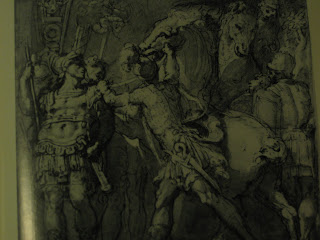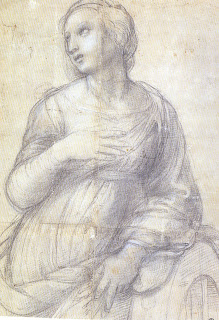Last summer, there was an exhibition in an art museum on Rembrandt’s works. I did want to go see the exhibition, but failed to do so. I wish I could’ve seen the drawings of Rembrandt, so I looked up for the books about his drawings. I found several books of Rembrandt, but one of the books was containing interesting topic.
The author focuses on the noses in the portraits of Rembrandt. He feels that the noses possess a will of their own. They have their own inclinations and seem to obey their own promptings rather that the laws of objective resemblance. They are long and slender, flat and squat, smooth or wrinkled, bony of fleshy, dainty or gross, pitted, scarred, inflamed, unblemished. According to the book, Rembrandt indicates a nose with a vertical tick or a pair of dots for the nostrils. He lavished as much care on layering pigment to build up a nose as on capturing the play of reflections and shadows in an eye. He rendered the complexion of a nose with the same fastidiousness he brought to paraphrasing the sheen of velvet or fur.
In his portraits and self-portraits, he angles the sitter’s face in such as way that the ridge of the nose nearly always forms the line of demarcation between brightly illuminated and shadowy areas. A Rembrandt face is a fact partially eclipsed; and the nose, bright and obvious, thrusting into the riddle of halftones, serves to focus the viewer’s attention upon, and to dramatize, the division between a flood of light – an overwhelmingly clarity- and a brooding duskiness. If the sitter is the lead actor of a performance, then the nose is his understudy on the stage of the face. The nose stands in the center, the focal of our gaze, if not the exact center, and demands that we notice it. It’s a peacockish actor: too obvious, too egotistical, too histrionic. It upstages the rest of the face and would make us forget that its posturing is mere vanity and vacuity compared to the eloquence of the eyes and lips.
Rembrandt tried on faces-and noses-like a child making grimaces in a mirror. Of the eighty-odd self-portraits now accepted by Rembrandt scholars, no two are alike. While all are recognizable as portrayals of the same man at different stages of his life and in different roles, circumstances, and moods, they display such an extraordinary variety of expressions, and the features are molded in such a diversity of shapes, that looking at them as a body is like leafing thought the scrapbook of an actor blessed with a particularly rubbery face. Here is the artist as a soldier; here he’s a gay blade, a beggar, a burgher, St.Paul, Democritus; here he is laughing or putting on a frown; here he looks terrified; here, inexpressibly sad.
1. Self-portrait in a Gorget, c.1629. Oil on Wood, 15 x 12⅛inches.
http://cfs11.blog.daum.net/image/28/blog/2008/09/03/13/41/48be1567ee490

2. Self-Portrait, 1629. Oil on Wood. 6⅛x5 inches. Munich, Alte Pinakothek.
http://www.book530.com/painting/48623/Self-Portrait-.html
3. Self-portrait in a Cap, Open-mouthed, 1630. Etching (B.320). Amsterdam, Rijksmuseum.
http://www.peaceloveandhappiness.org/?q=node/337
Sources
Michael, Taylor. Rembrandt’s Nose: Of Flesh& Spirit in the Master’s Portraits. Distributed Art Publishers, Inc. New York, 2007.






 Grunchec, Philippe. Master drawings by Géricault / Philippe Grunchec. Washington, D.C. : International Exhibitions Foundation, c1985.
Grunchec, Philippe. Master drawings by Géricault / Philippe Grunchec. Washington, D.C. : International Exhibitions Foundation, c1985.


































